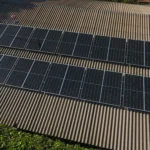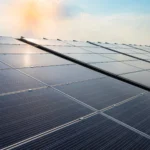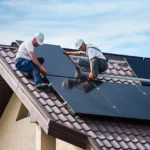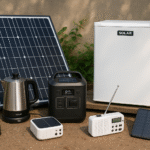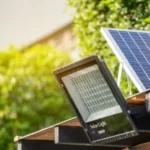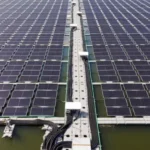Have you ever looked at your solar panel specifications and wondered, “What does this voltage rating mean?” You’re not alone. From first-time homeowners to seasoned solar users, many people find themselves confused by terms like Voc, Vmp, or system voltage.
If you’re trying to power your home, charge an EV, or go fully off-grid, understanding solar panel volt isn’t just for electricians; it’s essential knowledge that affects performance, efficiency, and return on investment.
In this blog, we’ll break down what voltage means in solar systems, how it impacts your setup, and how to make the best choices for your energy goals.
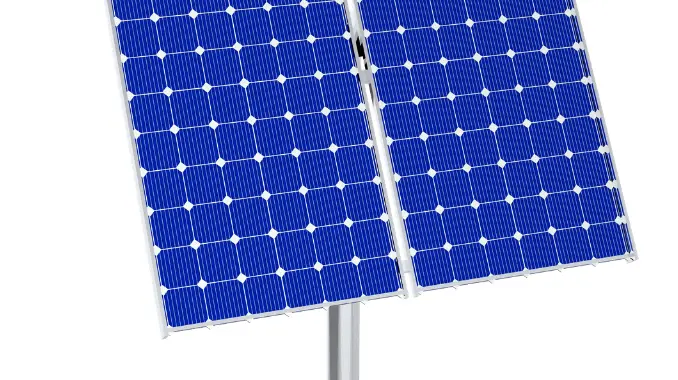
Understanding Solar Panel Voltage: The Basics
Voltage refers to the electrical pressure that causes current to flow through a circuit. In a solar panel system, it’s measured in volts (V) and dictates how efficiently electricity can be transmitted.
Every solar panel typically comes with three key voltage ratings: open-circuit voltage (Voc), voltage at maximum power (Vmp), and the nominal system voltage. Each of these ratings serves a distinct function in system design and energy delivery.
Why Does Voltage Matter?
The Solar panel volt plays a crucial role in how efficiently your system converts sunlight into usable electricity. A mismatch or poor design can result in lost energy, inverter issues, or even system failure.
Voltage affects everything from wire sizing to inverter compatibility. A well-maintained system can save homeowners and businesses thousands of dollars over time.
Also click here: Best solar inverter brand for home.
Choosing the Right Voltage for Your Setup
Selecting the appropriate voltage configuration for your solar setup depends on your energy needs and system type. Grid-tied homes, off-grid cabins, and EV charging stations all require different voltage considerations.
Matching the voltage of your solar panels with your batteries and inverters ensures optimal energy transfer and system longevity. Incorrect setups can lead to inefficiencies or even safety risks.
For Grid-Tied Homes
Grid-tied solar systems typically use panels rated between 30 and 48 volts. These are wired in series to produce a higher voltage input, normally ranging from 200 to 600 volts DC.
This voltage range enables the inverter to convert DC electricity into AC for home use efficiently. Always check the inverter specifications to ensure compatibility with your system’s voltage.
For Off-Grid Cabins or RVs
Smaller systems, such as those used in RVs or remote cabins, usually operate on 12V or 24V battery banks. These setups require precise voltage matching to avoid energy loss and ensure safety.
Using MPPT (Maximum Power Point Tracking) charge controllers can help regulate voltage differences and improve efficiency in these smaller, mobile applications.
For EV Charging at Home
Electric vehicles require substantial power for charging, and your solar system’s voltage must align with the charger’s requirements. Most Level 2 EV chargers need a 240V AC input.
To achieve this, your solar array should deliver between 400 and 600 volts DC before it is converted. Choosing a hybrid inverter that supports EV charging is often the most efficient solution.

Real-World Example: Dirty Panels and Voltage Loss
Dirt, debris, and even bird droppings can significantly reduce a Solar panel volt output. When panels become soiled, their ability to generate electricity decreases, resulting in lower energy production.
For example, a panel with a Vmp of 40V might drop to 32V if heavily soiled, resulting in a loss of up to 20% efficiency. Regular cleaning helps maintain optimal voltage and prolongs the system’s lifespan.
Voltage Drop: A Common but Overlooked Problem
Voltage drop occurs when electricity travels through long cables, especially in low-voltage systems. This resistance causes a loss in voltage by the time it reaches your batteries or inverter.
To mitigate voltage drop, use thicker cables, keep cable runs as short as possible, or upgrade to a higher voltage system. These adjustments can improve efficiency and reduce long-term energy losses.
What Do Solar Panel Manufacturers Say About Voltage?
Manufacturers provide detailed specifications to help consumers understand how their panels perform under different conditions. Key voltage metrics include Voc, Vmp, and the temperature coefficient of Voc.
Understanding these values helps you choose the right panel for your environment and application. For instance, a negative temperature coefficient indicates that the voltage will decrease as the temperature rises.
Also click here : Top solar and power inverter.
Troubleshooting Voltage Issues in Solar Systems
If your solar system seems underpowered, voltage should be one of the first things you check. Common culprits include shading, corrosion, and component mismatch.
Smart inverters often come equipped with real-time voltage monitoring, enabling homeowners to identify and address issues promptly. Regular maintenance checks can prevent most voltage-related problems.
Solar Panel Volt in EV and Battery Systems
As solar battery storage and EV integration grow in popularity, voltage balance becomes even more critical. Your PV array, inverter, and battery bank must all operate within compatible voltage ranges.
Using mismatched components can result in poor performance or system damage. Always consult with a licensed installer when designing complex setups involving high-voltage batteries or EV chargers.

Make Voltage Work for You
Voltage isn’t just a technical spec; it’s a vital part of your solar system’s performance. From choosing the right components to maintaining clean panels, every detail counts when it comes to maximizing energy efficiency.
Understanding solar panel volt helps you make informed decisions that improve your return on investment and ensure long-term energy reliability.
If your panels haven’t been cleaned in over three months, you could be losing 10 to 20% of your energy output due to voltage drop. Book a solar inspection today and start optimizing your system for peak performance.
FAQs
Are solar panels 12V or 24V?
Solar panels can be 12V, 24V, or even higher, depending on their intended application. Off-grid systems often use 12V or 24V panels matched to battery banks.
How many volts is one solar panel?
A typical residential solar panel produces around 30V to 48V of voltage under full sunlight. The exact voltage depends on the panel’s size and specifications.
Are solar panels 240 volts?
Individual panels are not 240V, but an array of panels connected in series can reach 240V or more to match inverter’s input requirements.
What is a good voltage for solar panels?
A good operating voltage for residential panels is typically between 30V and 48V. The total system voltage should align with your inverter or battery requirements.
Are solar panels AC or DC?
Solar panels produce direct current (DC). This DC power is converted to alternating current (AC) by an inverter for use in homes and businesses.


